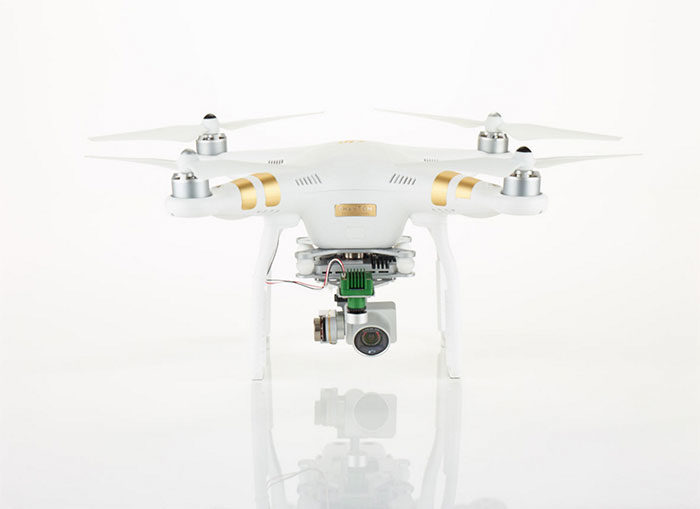Sentera is offering farmers flying the DJI Phantom 3 Professional drone an upgrade that provides real-time visibility of crop health data to create a precision agriculture scouting tool.
Sentera is a sensor, software and drone company based in Minneapolis, Minnesota. When integrated with the widely used Phantom 3, Sentera’s Single Sensor—designed to monitor crop health through near infrared (NIR) imagery and the normalized difference vegetation index (NDVI)—it offers farmers a small, lightweight data collection tool with expanded capabilities.
According to Sentra, its Phantom 3 NDVI Upgrade captures color and NDVI imagery simultaneously, helping growers remain competitive while using their current or low-cost tools. The upgrade can be applied to new or existing Phantom 3 drones.
“This season, growers successfully used the Phantom 3 NDVI Upgrade solution to help determine plant health and detect problems in the field, ultimately allowing them to decrease inputs while increasing their outputs,” said Kris Poulson, Sentera vice president of agriculture.
Jeff Boersma, a Pioneer seed sales representative, said, “Sentera’s Phantom 3 NDVI upgrade allowed me to capture exceptional NIR and NDVI imagery and data which helped me help my customers increase ROI and make strategic input decisions.”
The Sentera Single Sensor offers 10 megapixel NDVI and a global shutter for aerial data collection. Incorporating the sensor into a new or existing Phantom 3 drone was designed to be quick and easy, the company said.
At a cost of for $1,798 for the upgrade, Poulson said that pairing the Sentera Single Sensor with a Phantom 3 enables growers to add NIR and NDVI capabilities to an existing farm tool at minimal expense, something not possible six months ago at the current price point.
Phantom 3 drones can be sent to Sentera in a pre-paid box where engineers integrate the Single Sensor into the drone, a two-day process. A new Phantom 3 Professional drone with NVDI capabilities can also be purchased from Sentera.



![[Technology Corner] Discussing AI’s Potential Impact on Service & Support](https://www.precisionfarmingdealer.com/ext/resources/2025/04/11/Discussing-AIs-Potential-Impact-on-Service--Support.png?height=290&t=1744385717&width=400)


